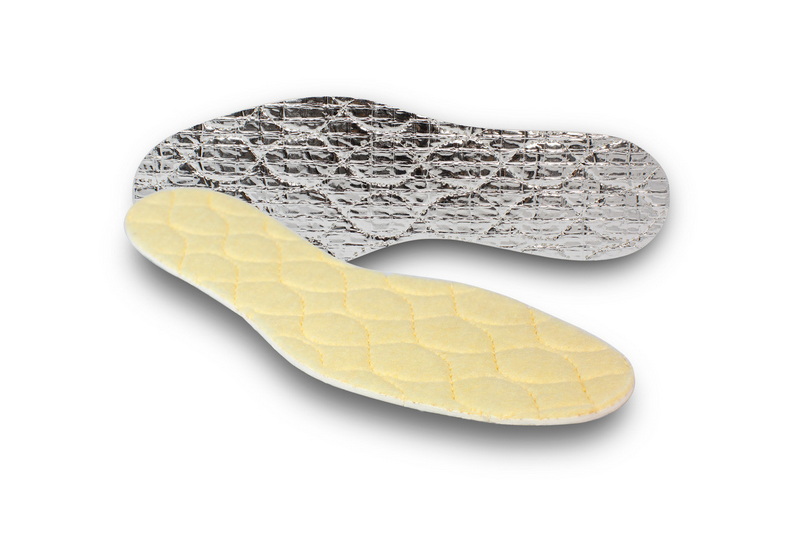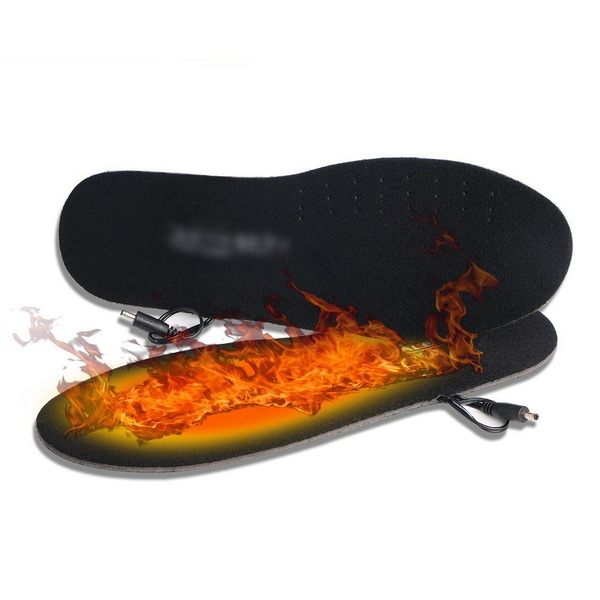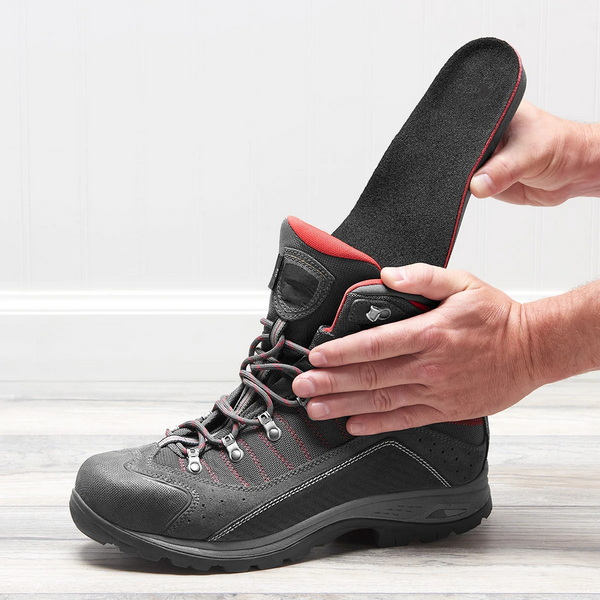Views: 222 Author: Edvo Publish Time: 2025-10-25 Origin: Site











Content Menu
● Benefits of Aluminum Insoles
● Structure and Material Composition
● Applications of Aluminum Insoles
● Manufacturing Process and OEM Customization
● Comparing Aluminum Insoles with Other Thermal Types
● Performance in Extreme Conditions
● Comfort and Ergonomic Design
● Sustainability and Eco-Friendly Production
● Innovations in Aluminum Insole Technology
● Market Trends and Global Demand
● Why Choose a Chinese OEM Aluminum Insole Supplier
● Consumer Experience and Practical Tips
● Common Misconceptions About Aluminum Insoles
● Future of Thermal Footwear Technology
● FAQs
>> 1. How do aluminum insoles keep feet warm?
>> 2. Are aluminum insoles suitable for all footwear?
>> 3. How should aluminum insoles be cleaned?
>> 4. Can these insoles be customized for brand requirements?
>> 5. Do aluminum insoles have an environmental advantage?
Keeping your feet warm and comfortable in cold climates is essential for both comfort and safety. When temperatures drop, insufficient foot insulation causes body heat to escape rapidly, often leading to discomfort and fatigue. Among the most effective modern footwear solutions are aluminum heated insoles, which are specifically engineered to reflect body heat and reduce heat loss. But how do they work, and are they really as effective as advertised? This article explores the science behind aluminum insoles, their materials, benefits, and manufacturing process, offering a full understanding for international shoe brands and wholesalers.

Aluminum insoles combine reflective metallic layers with soft, insulating materials. They typically include a thin aluminum foil layer laminated onto a foam or felt base to create a lightweight insert that forms a protective barrier between your foot and the cold ground.
The structure generally includes three or more layers:
- A metallic aluminum film that reflects radiant heat.
- A cushioning foam layer to distribute pressure and provide comfort.
- A moisture-absorbing layer made of fabric, felt, or wool.
The combination of these materials ensures that aluminum insoles not only keep the feet warm but also maintain comfort during prolonged use. Compared to traditional insoles made only of foam or textile, aluminum-lined designs provide superior heat insulation and durability.
Aluminum works on a physical principle known as low emissivity, meaning it reflects infrared radiation instead of absorbing it. The human body naturally emits heat energy, and this radiant heat escapes easily through thin shoe soles in cold environments. The reflective surface of the aluminum layer acts as a thermal mirror, bouncing the radiant energy back toward the feet and preventing heat from leaking out.
This reflection mechanism reduces radiant heat transfer, which can account for a significant portion of temperature loss. Because aluminum reflects up to 95% of radiant energy, it maximizes thermal retention inside the footwear. As a result, the temperature within the shoe remains more stable for hours, making aluminum insoles particularly effective for outdoor activities, industrial work, or winter sports.
1. Superior Heat Reflection
The main advantage lies in their ability to reflect warmth. Unlike thick wool or down, which trap air, aluminum prevents radiation loss directly, creating immediate insulation efficiency.
2. Lightweight Design
The foil used is extremely thin, so the insoles add minimal weight. This keeps footwear flexible and comfortable for all-day wear.
3. Cold and Moisture Resistance
The metal layer acts as a physical barrier against external cold and dampness, maintaining dryness and comfort even on snow or icy surfaces.
4. Improved Energy Efficiency
Feet that stay warm require less metabolic energy for heat production, helping users conserve stamina in harsh environments.
5. Customizability for OEM Brands
Manufacturers can control foil thickness, foam softness, and top-layer fabrics to meet various regional, seasonal, and branding preferences.
For shoe brands, this flexibility means aluminum insoles can be marketed under terms such as “thermal reflective insoles” or “heat-shield comfort technology,” appealing strongly to outdoor consumers.
A premium aluminum insole combines art and science. To achieve optimal reflection and insulation, several specialized materials are layered precisely:
- Metal Layer (Aluminum Foil): Acts as the reflective core, deflecting radiant heat and serving as a shield from ground-based cold.
- Thermal Foam Base (EVA or PU): Adds cushioning and resistance against conductive heat loss.
- Breathable Fabric Surface: Wicks moisture away, keeping feet dry and comfortable.
- Adhesive Layers: Bond the entire insole securely without adding bulk or affecting flexibility.
This multi-layered architecture results in a balance of thermal protection, ergonomic comfort, and lightweight performance, ideal for cold-weather footwear of all types.
Aluminum insoles are widely applied across footwear types due to their versatility and efficiency. They are found in:
- Winter Boots: Essential for keeping warmth in snow conditions.
- Safety Work Shoes: Provide heat insulation in construction or outdoor jobs.
- Hiking and Climbing Footwear: Maintain warmth during high-altitude or cold terrain.
- Casual Footwear: Added in sneakers or household shoes for seasonal comfort.
- Medical and Rehabilitation Footwear: Improve circulation and warmth for patients sensitive to cold.
Their adaptability makes them valuable for both mass-market footwear and high-performance outdoor gear.

The production of aluminum insoles involves several carefully controlled steps to ensure durability and thermal performance:
1. Material Selection – Choosing the right aluminum foil, foam density, and textile fabrics.
2. Lamination Process – Using precise heat and pressure to bond multiple layers into one composite.
3. Die-Cutting – Shaping different sizes and patterns to fit a range of footwear styles.
4. Printing and Branding – Adding customized branding, design, or logos per buyer's specifications.
5. Quality Control – Testing adhesive strength, thermal reflectivity, and compression recovery before packaging.
As a leading Chinese insole manufacturer, we specialize in OEM and ODM production for international brands. Our advanced lamination and cutting equipment can produce thousands of pairs per day while maintaining strict quality standards suitable for markets worldwide.
| Insole Type | Reflective Ability | Cushioning | Weight | Moisture Resistance | Ideal Environment |
|---|---|---|---|---|---|
| Aluminum Laminated | Excellent | High | Light | Excellent | Cold-weather, outdoor |
| Wool or Felt | Moderate | Moderate | Medium | Good | Indoor or mild cold |
| Gel or Silicone | Low | Excellent | Heavy | Poor | Daily comfort use |
| Cork | Low | Moderate | Medium | Moderate | Eco-friendly use |
| Foam Only | Low | High | Light | Fair | Everyday warm climates |
This comparison demonstrates that aluminum insoles offer the best combination of thermal efficiency and usability across diverse shoe categories.
Field performance tests show aluminum insole designs can retain up to 30% more warmth than traditional foam inserts. Unlike thick padding, the reflective layer responds immediately to body heat, preventing gradual cooling. Even in high humidity or snow, the aluminum barrier blocks ground cold effectively.
Users report noticeable benefits such as reduced toe numbness, less fatigue during outdoor work, and stable comfort over long hours. For environments like polar expeditions, skiing, or construction in winter regions, these insoles have become a must-have accessory in professional footwear kits.
While thermal reflection is essential, long-term wearability matters equally. Good aluminum insoles balance warmth with breathability and cushioning. Advanced designs include air channels between foam layers, which promote airflow and prevent overheating. Moisture-wicking surfaces pull sweat away from skin, reducing odor and enhancing hygiene.
Ergonomic shaping further supports proper foot alignment and arch support. By maintaining balance between heat reflection, softness, and flexibility, aluminum insoles deliver comfort throughout daily wear or intensive outdoor activity.
Proper care preserves the insole's thermal efficiency. To maintain performance:
- Air-dry insoles after each use to prevent moisture accumulation.
- Avoid high temperatures to protect adhesive layers.
- Hand wash gently without harsh scrubbing.
- Replace periodically if foil coating shows cracking or oxidation.
A well-maintained pair retains reflectivity for months, making it an economical and environmentally considerate choice.
As global markets shift toward environmental responsibility, the footwear industry also embraces sustainable solutions. Aluminum foil is fully recyclable and requires far less energy to produce than heavier metallic alternatives. Our manufacturing process minimizes waste by using precision cutting systems that utilize over 95% of raw material surfaces.
Additionally, non-toxic adhesives and recyclable foam bases help align with environmental standards such as REACH and RoHS certifications. This makes aluminum insoles not only high-performing but also eco-conscious—an important factor for globally minded brands seeking greener product lines.
Recent developments have introduced:
- Perforated aluminum layers for better airflow without sacrificing reflection.
- Hybrid insulation foams combining aluminum film with thermal memory materials.
- Odor-control fabrics integrated with silver ions or bamboo charcoal layers.
- Smart manufacturing lines capable of full 3D cutting and digital branding for OEM clients.
These innovations are shaping the next generation of heat-reflective shoe technologies, making aluminum insoles even more versatile and durable for extreme and everyday conditions alike.
Demand for aluminum insoles continues to rise, especially in colder regions such as Europe, North America, and Northern Asia. Rising outdoor sports participation and growing attention to comfort in industrial footwear are key drivers. Retailers increasingly prefer aluminum-based thermal insoles because they combine visible value (the metallic layer) with actual functional benefits.
For global brands, offering aluminum heat-reflective insoles also enhances perceived product technology and quality, supporting premium pricing in competitive footwear markets.
China leads the insole manufacturing sector with innovations in lamination techniques and cost-efficient production. Partnering with an experienced Chinese producer allows brands to access:
- Custom material formulation for thermal enhancement.
- International-quality production systems certified under ISO standards.
- Design flexibility with customer branding and seasonal variations.
- Competitive lead times and global logistics support.
With extensive export experience, our factory has established partnerships with leading brands across Europe, the United States, Japan, and Oceania, helping them expand their product range with reliable thermal insoles that meet performance and market standards.
Consumers often describe the comfort difference as immediate warmth and dryness upon first wear. For best results, aluminum insoles should be inserted with the reflective side facing upward, toward the foot. Layer positioning matters because the aluminum must reflect internal body heat effectively.
They are compatible with most footwear types and can be trimmed for personalized fit. Because they occupy minimal space, users can enjoy warmth without changing shoe size or sacrificing comfort.
Misconception 1: They make feet sweat heavily.
In reality, high-quality designs allow ventilation while managing moisture with breathable layers.
Misconception 2: The metal makes them rigid or slippery.
The foil is extremely thin and flexible, bonded securely within foam layers for natural movement.
Misconception 3: They can overheat feet.
Since aluminum reflects but does not generate heat, temperature remains balanced even during long wear.
These clarifications highlight why understanding product design is crucial for accurate marketing and consumer satisfaction.
As wearable technology develops, footwear manufacturers are exploring smarter heat management solutions that may integrate aluminum properties with temperature sensors, heating films, and digital control. Aluminum will remain a key component due to its reflection quality, lightweight structure, and recyclability. The fusion of traditional thermal science with emerging smart features promises more adaptive, energy-efficient shoes suited for a variety of environments.
Aluminum insoles are engineered solutions for maintaining warmth, comfort, and energy efficiency in footwear. Their thin aluminum layers reflect radiant heat, keeping temperatures stable without adding bulk. The combination of thermal science, ergonomic design, and sustainability makes them ideal for diverse applications—from industrial work boots to winter hiking shoes.
As a trusted Chinese OEM manufacturer, we supply custom aluminum insoles tailored for international brands, offering high-performance materials, advanced lamination technology, and scalable production. Our goal is to help global footwear companies enhance product quality while ensuring users experience reliable warmth, comfort, and durability wherever they go.

They reflect body heat back toward the foot, reducing thermal loss and maintaining warmth longer than standard foam insoles.
Yes. They fit well in boots, sneakers, work shoes, and winter footwear without affecting comfort or flexibility.
Hand wash gently using mild soap and air-dry naturally. Avoid machine washing or high-heat drying.
Absolutely. OEM manufacturers can customize size, thickness, materials, and packaging to meet specific brand standards.
Yes. They use recyclable materials and eco-friendly adhesives, supporting energy-efficient and sustainable manufacturing.